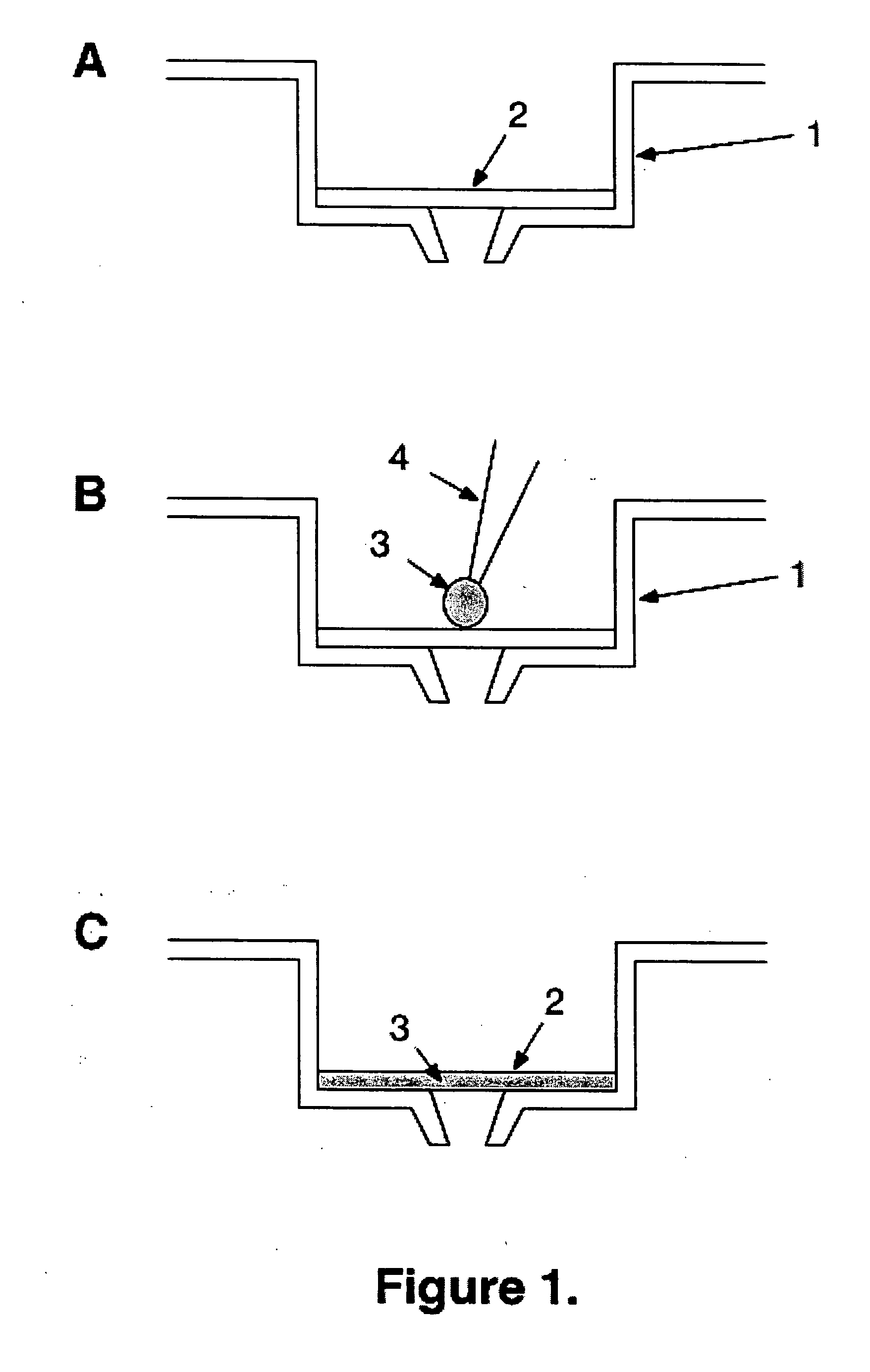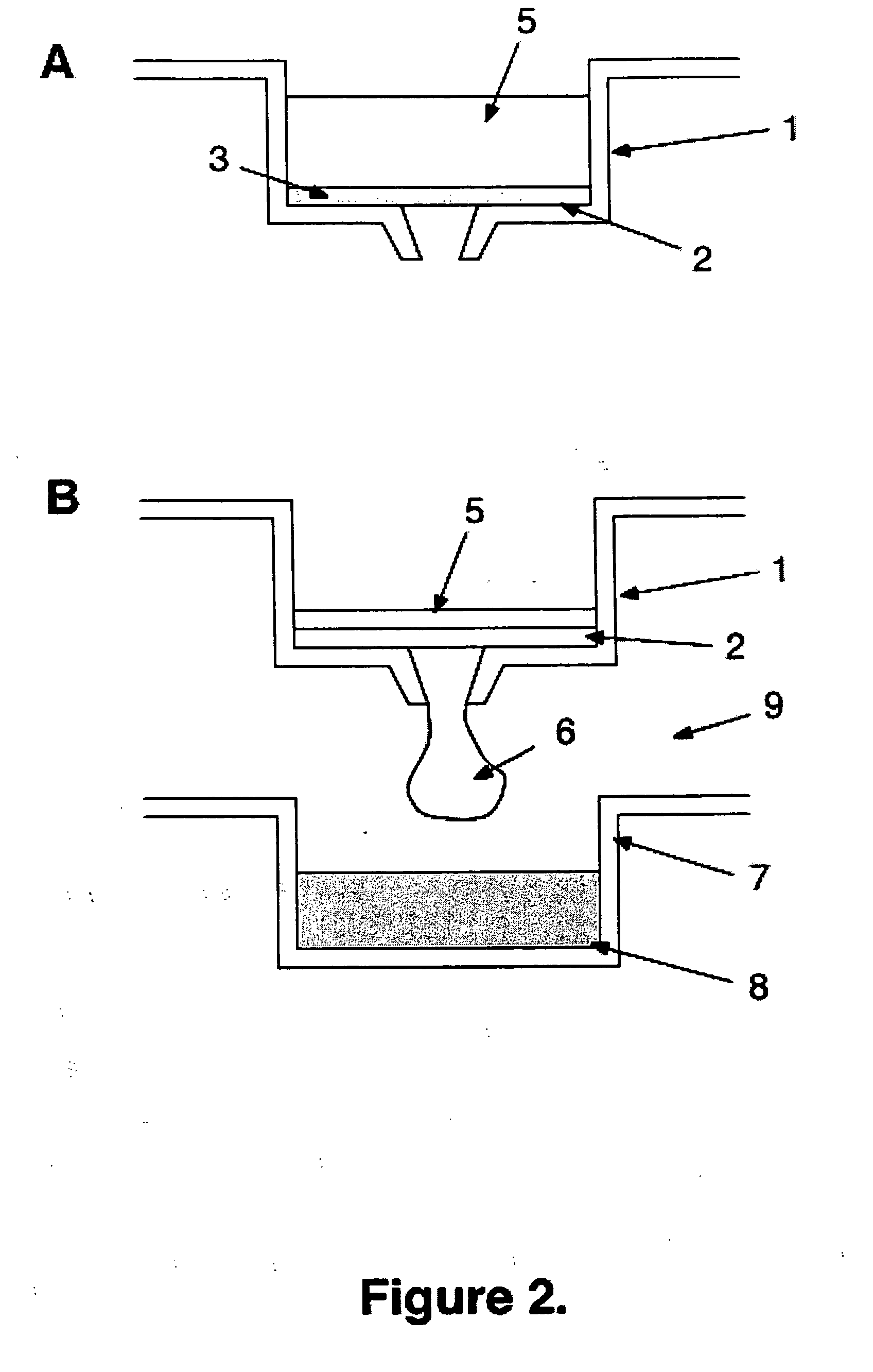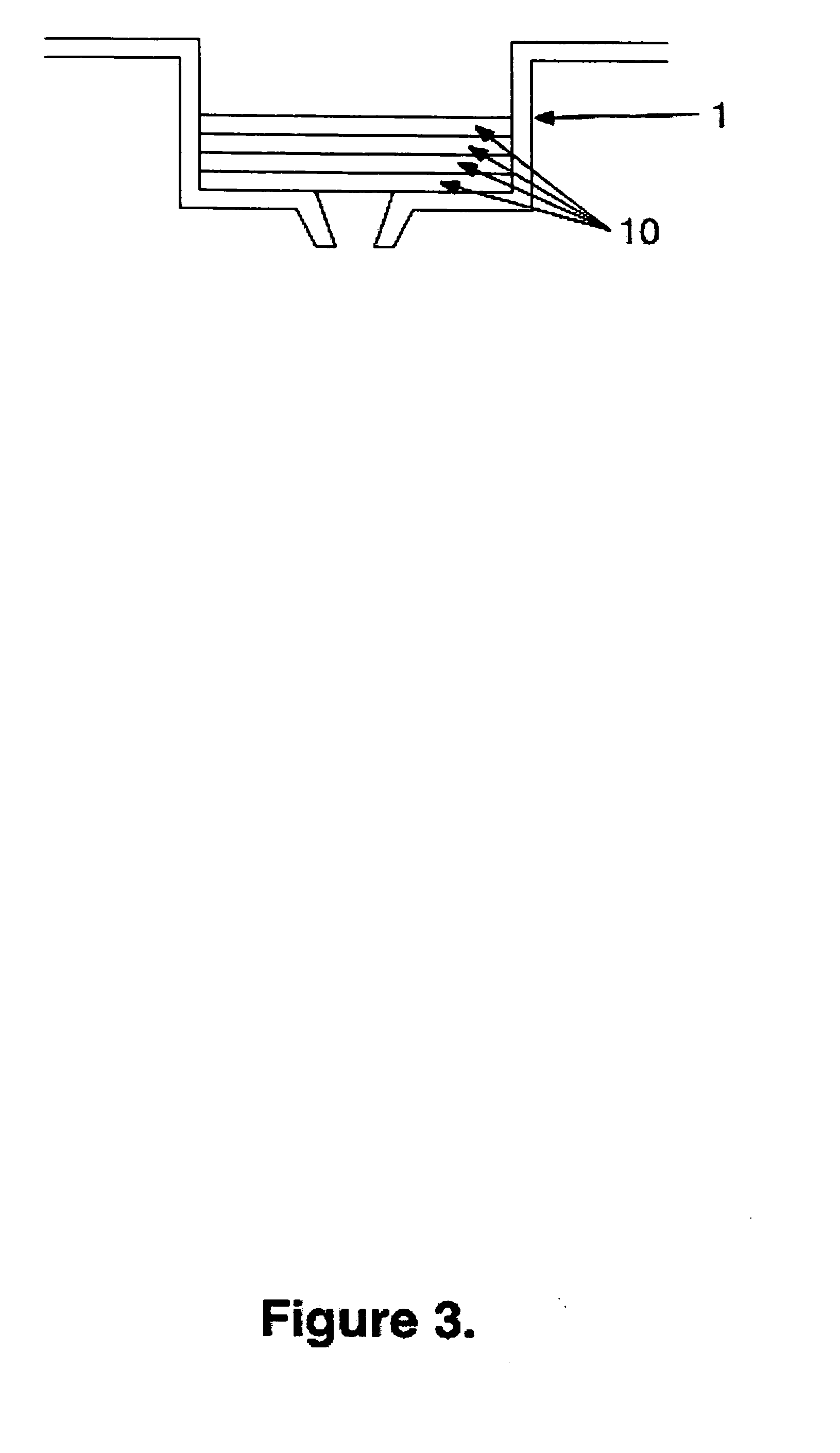Process for treatment of protein samples
- Summary
- Abstract
- Description
- Claims
- Application Information
AI Technical Summary
Benefits of technology
Problems solved by technology
Method used
Image
Examples
example 1
[0082] MSIPN4510 96-well MultiScreenHTS Plates with hydrophobic Immobilon-P PVDF membrane are purchased from Millipore and used as support. Trypsin is purchased from Sigma. A vacuum filtration device (Millipore MultiScreen™ Vacuum Manifold 96-well) is used to pull liquids through the filters into the wells of a receiver 96-well plate below the filter plate using a vacuum of 9″ Hg.
[0083] The PVDF membranes are first wetted by loading each well with 0.05 ml of 100% methanol, followed immediately by 0.25 ml of 0.1M ammonium bicarbonate buffer pH 8.0, which is pulled through the membrane by vacuum. Three additional aliquots of 0.25 ml of 0.1M ammonium bicarbonate buffer are loaded and pulled through the membranes in each well. Next the membranes are trypsin-coated by application of 100 ul of 2 mg / ml trypsin in ammonium bicarbonate buffer with 20 mM calcium chloride, pH 8.0, which is pulled slowly through the membranes by vacuum. Lastly, the membranes are washed by passage through each ...
example 2
[0088] In this example, plasma is obtained from a sample of whole blood obtained by fingerprick, the plasma proteins denatured stabilized for storage by drying. A wicking membrane (Predator, provided on a thin impermeable polyester support) and a blood filter membrane (BTS Highly Asymmetric Membrane BTS-100) are purchased from Pall Corporation.
[0089] A strip of Predator membrane 1 cm×10 cm is prepared. A solution of 6M guanidine hydrochloride (protein denaturant) in water, containing a trace of bromophenol blue marker dye (enough to impart a blue color), is loaded onto one end of the strip and allowed to wick over a total length of 7 cm from the application end (leaving 3 cm at the other end dry). Any excess liquid on the membrane surface is removed to prevent further wicking. The wetted portion of the membrane is rapidly dried by application of hot air to the surface (using, for example, a common hairdryer).
[0090] This reagent-loaded strip is placed on a horizontal surface. A pie...
PUM
| Property | Measurement | Unit |
|---|---|---|
| Capillary wave | aaaaa | aaaaa |
| Volume | aaaaa | aaaaa |
| Wetting tension | aaaaa | aaaaa |
Abstract
Description
Claims
Application Information
 Login to View More
Login to View More - R&D
- Intellectual Property
- Life Sciences
- Materials
- Tech Scout
- Unparalleled Data Quality
- Higher Quality Content
- 60% Fewer Hallucinations
Browse by: Latest US Patents, China's latest patents, Technical Efficacy Thesaurus, Application Domain, Technology Topic, Popular Technical Reports.
© 2025 PatSnap. All rights reserved.Legal|Privacy policy|Modern Slavery Act Transparency Statement|Sitemap|About US| Contact US: help@patsnap.com



